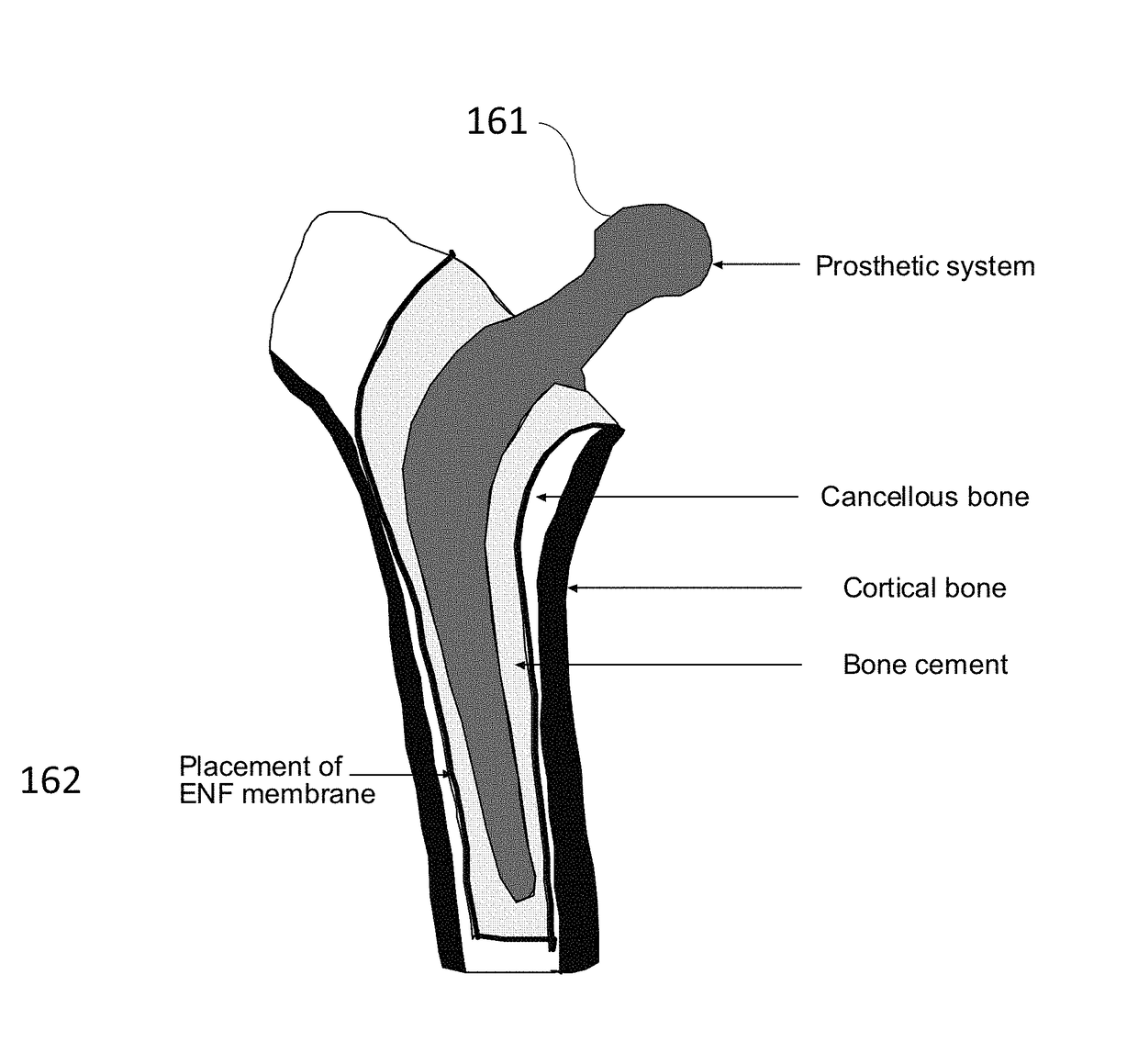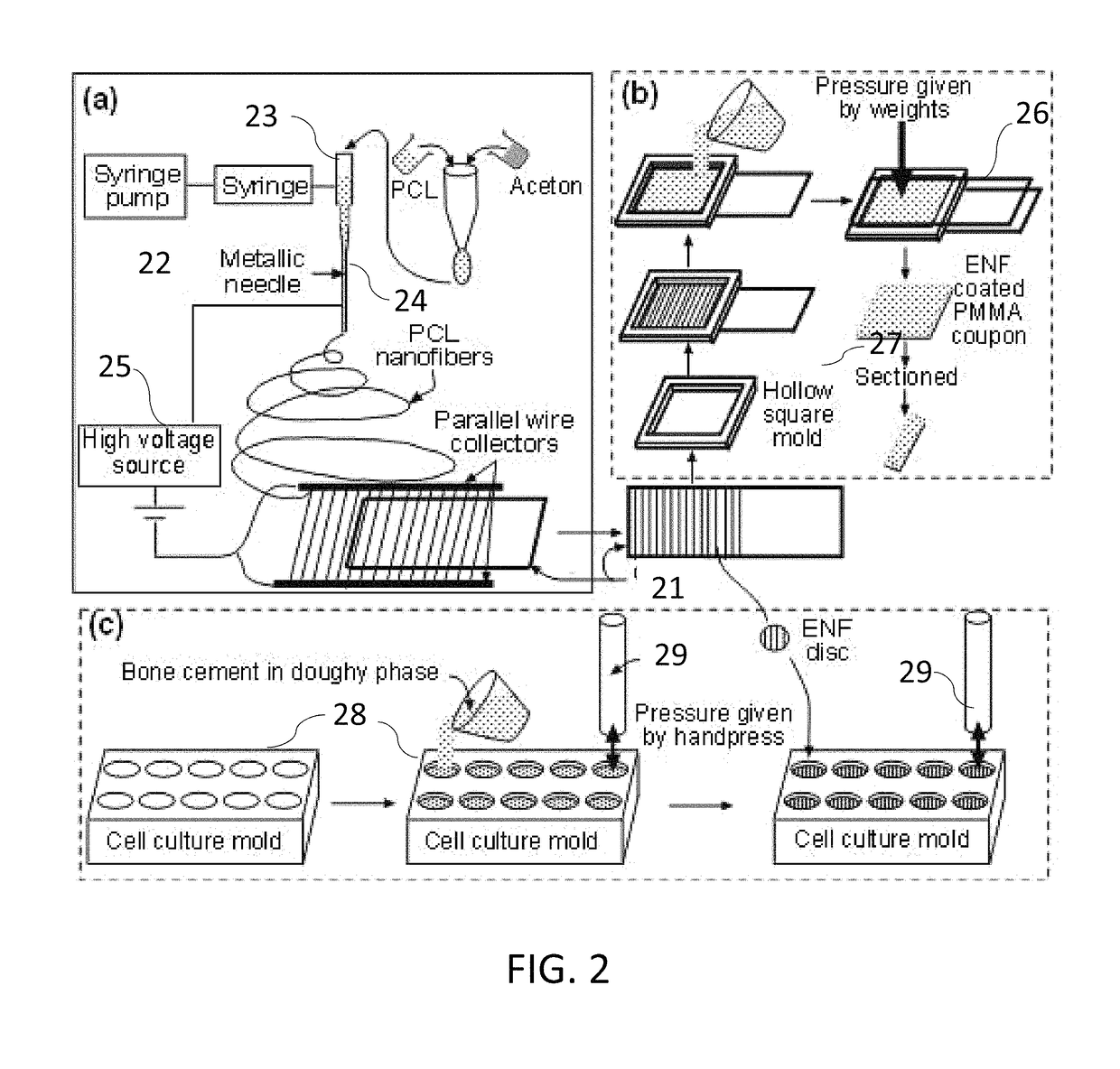Method and apparatus to control the heterogeneous flow of bone cement and improve osseointegration of cemented implant
a cemented implant and heterogeneous flow technology, applied in the field of prosthetics, can solve the problems of inability to conduct cell viability studies to evaluate the effect of fiber treatment on biocompatibility, inability to achieve ideal long-term mechanical stability of a cemented implant, and inability to conduct cell viability studies to achieve the effect of biocompatibility, improve the biomechanical performance of polymer, and improve the osseointegration of cemen
- Summary
- Abstract
- Description
- Claims
- Application Information
AI Technical Summary
Benefits of technology
Problems solved by technology
Method used
Image
Examples
Embodiment Construction
[0032]The present invention provides a novel cementing technique to solve the debonding problem and improve the mechanical stability and osseointegration of cemented implant with bone. Implants can be coated with a functional coating to increase the osteoinductive properties, and thereby to improve osseointegration of an implant. Methods (incorporated herein by reference in their entirety) disclosed by the present inventor in U.S. Pat. No. 9,359,694 and co-pending U.S. application Ser. Nos. 15 / 439,650 and 15 / 467,652 provide a set of steps (e.g. grooving, plasma oxidizing) by which a nanofiber membrane, composed of Collagen glycosaminoglycan (CG) and Polycaprolecton (PCL) electrospun nanofiber (ENF) can be coated on Ti, a widely-used orthopedic and orthodontic implant material. Both in vitro and in vivo evidence indicated that machine sawing of microgrooves on titanium (Ti) implants and coating the microgrooves with collagen-poly-ε-caprolactone nanofiber matrix (CG-PCL NFM) significa...
PUM
| Property | Measurement | Unit |
|---|---|---|
| length | aaaaa | aaaaa |
| size | aaaaa | aaaaa |
| pressure | aaaaa | aaaaa |
Abstract
Description
Claims
Application Information
 Login to View More
Login to View More - R&D
- Intellectual Property
- Life Sciences
- Materials
- Tech Scout
- Unparalleled Data Quality
- Higher Quality Content
- 60% Fewer Hallucinations
Browse by: Latest US Patents, China's latest patents, Technical Efficacy Thesaurus, Application Domain, Technology Topic, Popular Technical Reports.
© 2025 PatSnap. All rights reserved.Legal|Privacy policy|Modern Slavery Act Transparency Statement|Sitemap|About US| Contact US: help@patsnap.com



